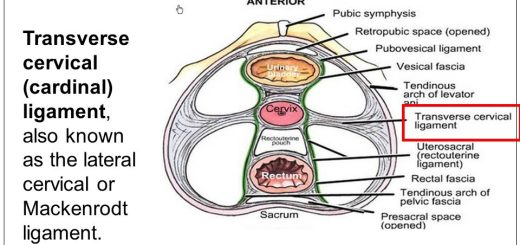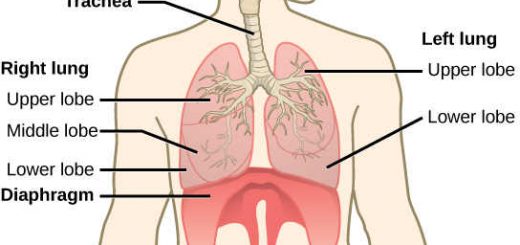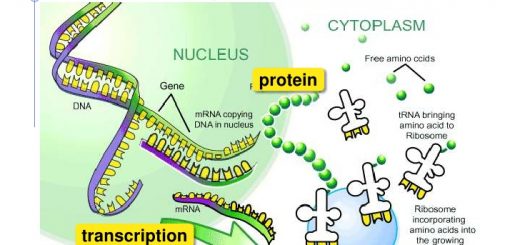Epithelial polarity, Apical, basal and lateral surfaces of epithelial cells
Cell polarity is a main feature of many types of cells, The epithelial cell has an apical, basal, and lateral surfaces; meaning that cell regions near each surface exhibit special structural modifications to carry out specific functions. Epithelial cells can connect to one another via their lateral membranes to form the epithelial sheets that line the cavities & surfaces throughout the animal body.
Epithelial polarity (Cell surface specialization)
Epithelial cells are one example of the polarized cell type, featuring distinct ‘apical’, ‘lateral’ & ‘basal’ plasma membrane domains. Every plasma membrane domain contains a distinct protein composition, giving them distinct properties & allowing directional transport of molecules across the epithelial sheet. Many molecules are located at the apical membrane, but only a few key molecules act as determinants that are required to maintain the identity of the apical membrane and, thus, epithelial polarity.
Apical Specializations
The apical surface of the epithelial cell is the upper free surface exposed to the body exterior or the cavity of an internal organ, the structural modifications in the apical domain include:
Microvilli: these are non-motile cytoplasmic projections that arise from the apical surface of most epithelial cells as finger-like evaginations; they contain a core of actin filaments. they increase the surface area for fluid absorption, they are present mainly in the absorptive columnar cells of the intestine and kidney tubules.
Stereocilia are long, branching microvilli found mainly in the non-ciliated pseudostratified columnar epithelium of the male genital ducts e.g. the epididymis, and they increase the surface area for fluid absorption.
Cilia and flagella: these are generally-motile cytoplasmic projections that extend from the cell surface. Cilia are longer than microvilli. Flagella resemble cilia in structure but they are much longer and are single per cell e.g. flagellum of the spermatozoon.
Histological structure of cilia: by EM, each cilium is formed of a basal body, a shaft, and rootlets.
- The basal body is a replicate of the cell centriole having a similar structure; 9 triplets of microtubules (9×3=27 microtubules) from which the shaft arises, there is a basal body for each cilium and basal bodies are present in the apical cytoplasm under the cell membrane.
- The shaft (axoneme) extends from the cell surface, it contains 9 peripheral doublets of microtubules together with a central pair of singlet microtubules (9×2+2=20 microtubules).
- Rootlets extend from underneath the basal body, in the form of radiating microtubules anchoring the cilium into the cytoplasm.
Clinical hint: Abnormal proteins of cilia or flagella resulting from mutation are responsible for the immotile cilia syndrome, the symptoms are:
- Male infertility due to immotile spermatozoa.
- Chronic respiratory infection caused by a lack of cleaning action of cilia in the ciliated pseudostratified columnar epithelium of the respiratory tract.
Basal Specializations
The structural modifications in the basal domain include basal infoldings, the basement membrane, and cell-to-matrix junction.
- Basal infoldings: the basal cell membrane is thrown into folds, this aims to increase the surface area where ions transport occurs as in kidney tubules.
- Basement membrane: all epithelial cells in contact with subjacent connective tissue have at their basal surfaces a specialized extracellular material, in the interface between epithelium and connective tissue, it has 2 constituents; the basal lamina formed of adhesive glycoprotein and the outer reticular lamina formed of a fine network of collagen fibrils.
- Basal cell-to-matrix adhesions (hemidesmosomes).
Function of the basement membrane
- Structural attachment as it serves in the attachment of the epithelial cells to the underlying connective tissue.
- Filtration as it regulates exchanges of macromolecules between the epithelium and the surrounding tissues.
- Tissue scaffold as it directs the migration of epithelial cells (re-epithelization) during wound repair, it acts as a barrier against the passage of malignant cells; hence an invasion of the basement membrane is associated with a high grade of malignancy.
Lateral Specializations
The structural modifications In the lateral domain include:
- Cellular interdigitations. the lateral cell membranes in some epithelial cells form folds and processes between neighboring cells to increase the surface area for fluid transport, they are present mainly in the absorptive columnar cells of the intestine and kidney tubules.
- Intercellular junctions: these are specified areas of the cell membrane that link the neighboring cells together.
Tissues types, Epithelial tissue features, Covering & Glandular Epithelium
DNA Repair types, definition & importance, Protein Biosynthesis & Genetic Code
DNA replication steps & rules, DNA polymerase enzymes & RNA primer synthesis
Gene mutations types, causes, examples & Regulation of Gene Expression
Protein biosynthesis steps, site, importance, inhibitors & Protein maturation
Importance of Nucleosides, Nucleotides, Purines, Pyrimidines & Sugars of nucleic acids
Cell adhesion molecules, Cell junctions types, definition & function



